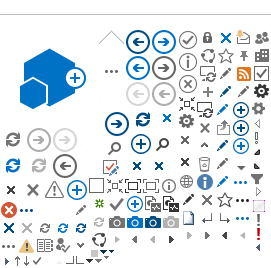D.3-1 Building confidence and security in the use of ICTs [85]
According to the 2014 Global Cybersecurity Index (GCI) and other sources, in 2014, there were 103 countries with a national computer incident response team (CIRT) and 72 countries with a national cybersecurity strategy helping to reduce the cybersecurity divide. The second iteration of the GCI was completed in 2016, with 134 responses from Member States (a 25% increase over 2014), showing an increase of the number of national CIRTs and National Strategies.The work on the GCI 2014 and 2016 has served to help countries identify areas for improvement, motivate actions to improve cybersecurity, raise the level of cybersecurity worldwide, contribute to identifying and promoting best practices, and foster a global culture of cybersecurity.
The 2018 edition of the GCI will be released in September and as of June 2018, 153 countries provided responses.
ITU's cybersecurity activities have helped to strengthen Member States' capacity to incorporate and implement cybersecurity policies and strategies into national plans, and have also resulted in enhanced organizational capacity, including:
- CIRT assessments entailing in-country missions for information gathering and resulting in capacity-building and, in nine countries, establishment of a national CIRT.
- Fourteen regional cyberdrills conducted with 1 900 participants from 160 countries.
- 15 technical workshops, which enhanced the capacity of the 170 participants.
- The dissemination to Member States of three ITU publications, together with 20 other publications from partners, to improve understanding of cybersecurity challenges.
- Six WSIS workshops and four pre-study group workshops were held to enable some 350 participants to exchange expertise and build their capacity.
A National Cybersecurity Strategy Guide is being drafted by a 15-member partnership, to be used by ITU and other national cybersecurity strategy partners to assist Member States in pursuing a more coherent and harmonized approach. The guide will be released in September 2018.
D.3-2 ICT applications and services [86]
ICT applications and services are an important demand-side driver that can encourage the adoption of broadband services. BDT's efforts were aimed at facilitating the development and use of ICT applications and services that supported sustainable development, including in the fields of public administration, business, education and training, health, employment, environment, agriculture and science.
Several high-level events were organized in order to facilitate ITU Member States to develop national e-strategies to foster an enabling environment for upscaling ICT applications. These events include a high-level joint ITU-WHO digital health policy dialogue in May 2016 (e-health), a joint FAO-ITU E-agriculture Strategy Guide published in 2016 (e-agriculture) and a joint ITU-UNESCO (United Nations Educational, Scientific and Cultural Organization) policy forum on mobile learning in March 2016, March 2017, and March 2018 (e-learning), just to name a few.
"Be He@lthy, Be Mobile" is a global joint initiative between ITU and WHO to work with governments on identifying and scaling up evidence-based interventions in order to use m-Health to address non communicable diseases and their associated risk factors. It currently provides technical and financial support to programmes in India, Norway, the Philippines, Senegal, Tunisia, Egypt, the United Kingdom and Zambia. It covers a range of income groups and disease areas, including mSmokingCessation, mDiabetes, mCervicalCancer and mCOPD (COPD: chronic obstructive pulmonary disease). It includes “ITU-WHO mHealth Innovation and Knowledge Hub in EU” project, with a total funding of 3 million Euros granted by the European Commission to support countries in implementing mHealth in healthcare services.
A joint effort was launched with WHO African Region to scale up Digital Health services in Africa. The partnership will focus on building a capable workforce to use ICTs effectively for health, as well as consolidating existing efforts and resources towards making available ICT platforms for digital health services via multi-stakeholder partnerships. A project on Digital Identity for Development was launched.
In 2018, a #HackAgainstHunger Hackathon was organized in partnership with FAO. A special Track within the AI for Good Summit (2018) on using Artificial Intelligence applications focused on quick-wins areas and AI applications for health.
A collaborative arrangement was signed with FAO to reinforce the work on e-agriculture issues and expand the scope and depth of activities.
[85] WTDC Res. 1, 5, 9, 15, 30, 33, 37, 45, 50, 59, 64, 67, 69, 78, 79 ; PP Dec. 5, 13 ; PP Res. 25, 71, 72, 130, 179, 181 ; WTSA Res. 50, 52, 58 ; WSIS Action Lines C5 ; SDG Targets 1, 3, 4, 5, 7, 8, 9, 10, 11, 16, 17.
[86] WTDC Res. 1, 5, 30, 54; PP Dec. 5, 13; PP Res. 25, 71, 72, 139, 140, 183, 202; WSIS Action Line C7; SDG Targets 2, 3, 4, 6, 7, 8, 11.
